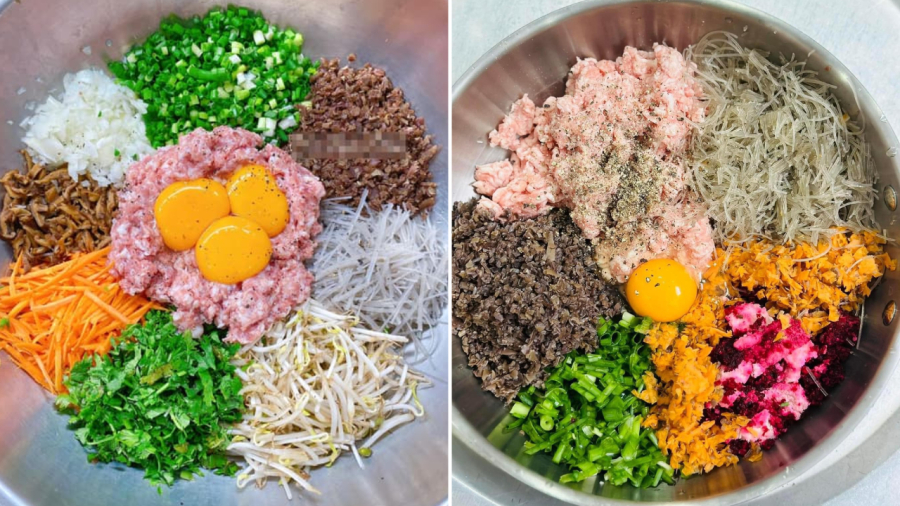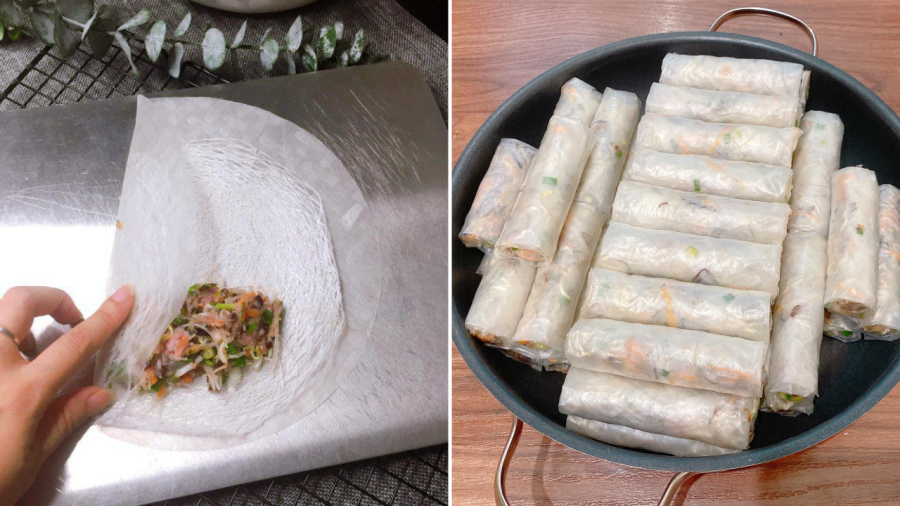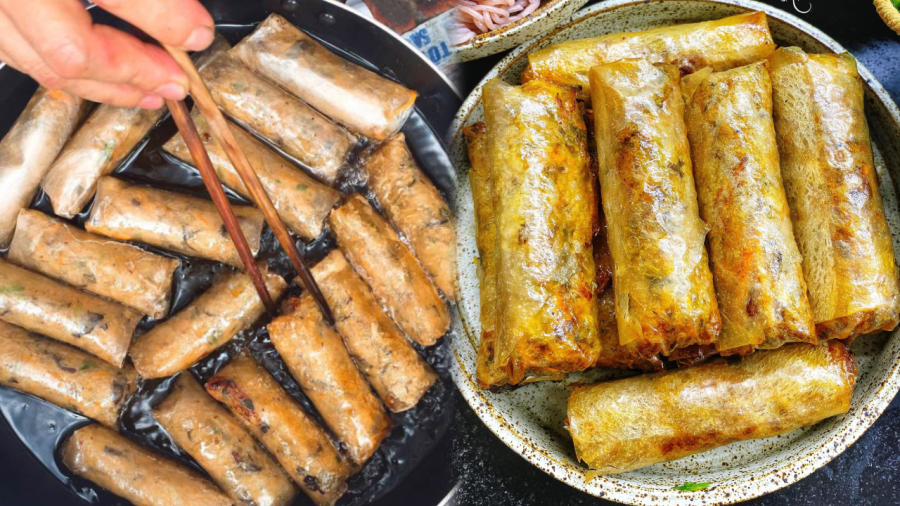Deep-fried spring rolls are a staple in Vietnamese cuisine. Despite their simple ingredients, these spring rolls pack a punch in terms of flavor and taste. When frying spring rolls at home, a common issue is that they don’t turn out as golden and crispy as those from restaurants. To address this, you can follow these tips for making perfect spring rolls.
Keep the filling dry
The ingredients for the spring roll filling can vary according to your taste and preferences. You can make vegetarian spring rolls or meat-filled ones as you like.
Typically, the filling for meat spring rolls includes ground pork, glass noodles, vegetables (carrots, jicama, bean sprouts, onions, and mushrooms), scallions, coriander, wood ear mushrooms, and eggs. If you’re making seafood spring rolls, you can add shrimp, crab, or lobster. For vegetarian spring rolls, you can replace the meat with dried tofu or steamed mung beans.

Spring rolls offer a versatile canvas for your favorite ingredients.
Season the meat separately with a little bit of seasoning powder, fish sauce, pepper, and oil.
Finely chop or grate the vegetables and season them with a pinch of salt before squeezing out the excess water. Alternatively, you can blanch the vegetables (like jicama and bean sprouts) in boiling water before chopping and squeezing out the water. This prevents the filling from becoming soggy. Soak the wood ear mushrooms and black fungus in warm water to soften them, then rinse and chop finely.
For the glass noodles, soak them in water at around 40–45°C. Avoid using hot water as it can make the filling mushy. Similarly, don’t soak them in cold water as it will make the filling hard. Drain the soaked noodles and cut them into small pieces.
Once all the ingredients are prepared, mix them together, adding just enough egg to bind the filling. Avoid using too much egg, as it can cause the filling to release water, leading to bursting and soggy spring rolls.
Wrapping the Spring Rolls
There are different types of spring roll wrappers (rice paper/spring roll skins) to choose from. You can select the one you prefer. Usually, to achieve crispiness and prevent bursting, you can use two layers of regular wrappers or one layer of a regular wrapper and one layer of a lattice wrapper. You can also use popiah or ram wrappers.

Avoid wrapping the spring rolls too tightly to prevent bursting.
Chill the Spring Rolls
It’s best not to fry the spring rolls immediately after wrapping them. Instead, place them in the refrigerator for about 20 minutes. This helps the spring rolls set, dry, and become crispier when fried.
Glaze for Golden Color
To achieve a golden, crispy exterior, brush the spring rolls with a thin mixture of diluted sugar water or diluted vinegar. Alternatively, some people use beer, which adds a unique aroma and crispiness to the spring rolls.
Double Frying for Crispiness
One of the secrets to achieving crispiness and preventing oil absorption is to fry the spring rolls twice.
For the first frying, use medium heat, and when the spring rolls start to firm up and turn a light golden color, remove them from the oil. If you plan to eat them immediately, you can proceed with the second frying. Otherwise, let them cool completely before placing them in a container and freezing them (use parchment paper between layers to prevent sticking).

Double frying ensures crispiness and prevents oil absorption.
When you’re ready to eat, fry the spring rolls without thawing them. Start with medium heat to turn the spring rolls a golden brown, then increase the heat to high to ensure they release any excess oil. This prevents greasiness and soggy spring rolls.
After frying, place the spring rolls on paper towels to absorb excess oil before arranging them on a plate. This ensures they stay crisp and don’t become soggy.






































